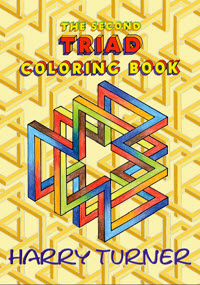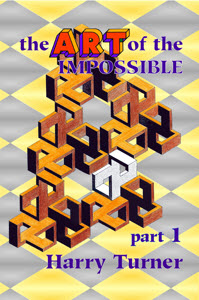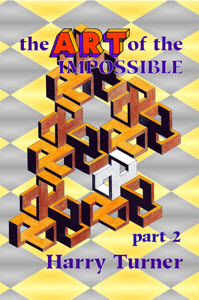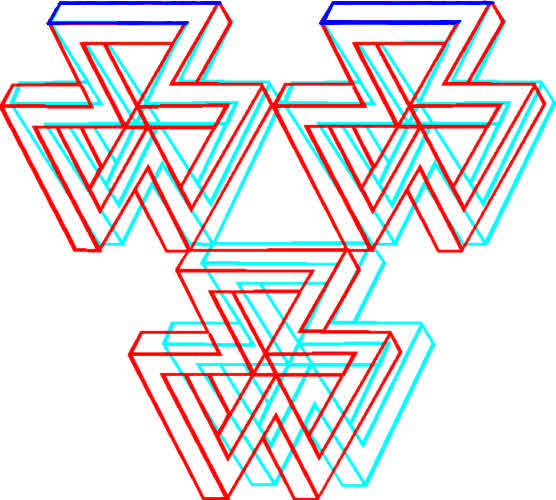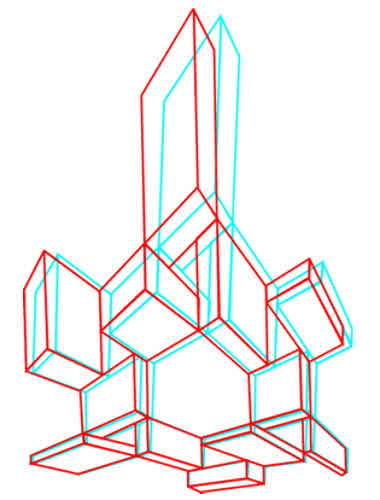| | Obituary Page | Prozine Artwork | Fanzine Artwork | Fanzines | Footnotes | Impossible Objects | History | |
| |||||
| ||||||||
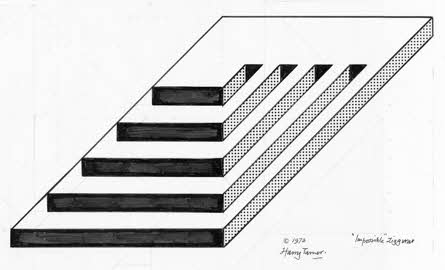 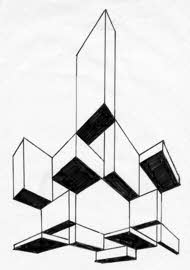 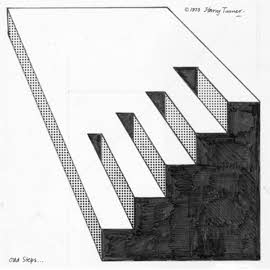 Impossible Ziggurat, 1973 / Floating City, 1974 / Odd Steps, 1973 The Ziggurat featured in The Penrose triangle and a family of related figures, a paper by Stephen W. Draper of the University of Sussex in Perception Vol. 7, 283-296 (1978) | ||||||||
| ||||||||
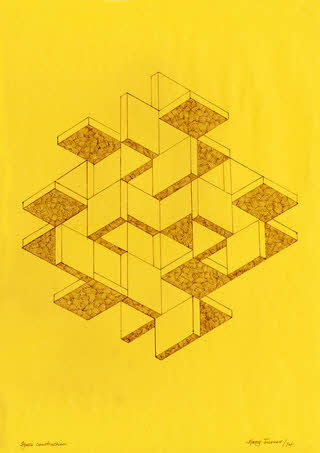 Space Construction, 1974, ink on A3 card | 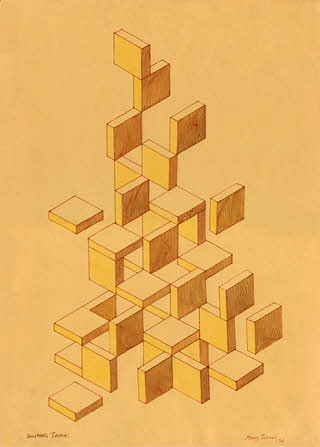 Unstable Tower, 1974, ink on A3 card |
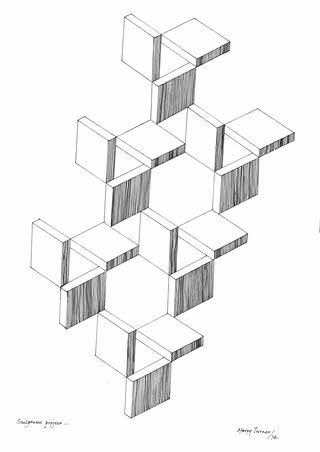 Sculptural Project, 1974, ink on A3 card | ||||||
| ||||||||
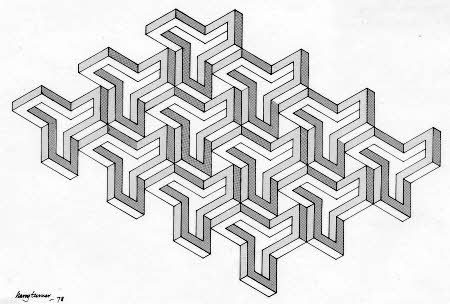 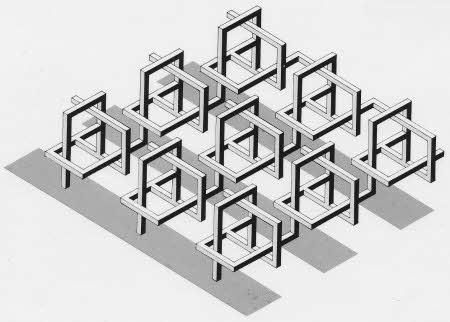 Impossible object designs from an extended collection of types, 1978 & 1980 | ||||||||
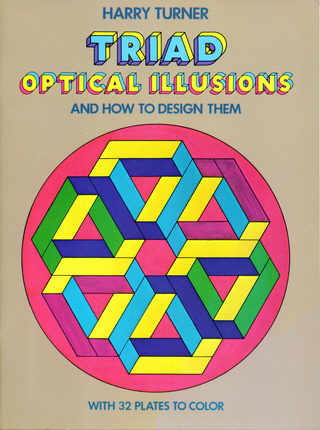 "Triad Optical Illusions and how to design them" by Harry Turner, Dover Publications, 1978 | 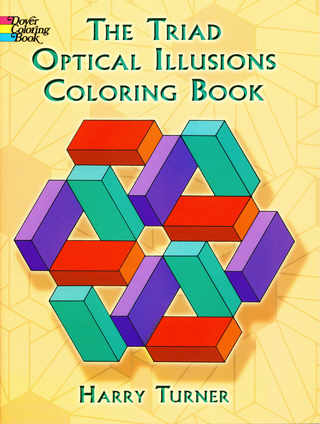 Triad design colouring book by Harry Turner, Dover Publications, 2006 | 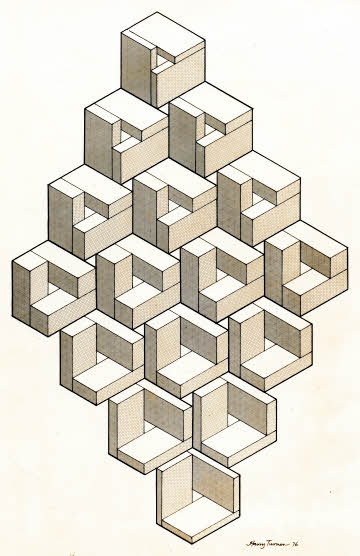 Impossible object transformation, 1976: an illustration for Martin Gardner's column in Scientific American for November 1976 | ||
| When Dover reissued the Triad design book as a colouring book (with the explanations and technical stuff removed) after a gap of almost 30 years, Harry Turner tried to interest them in a second volume of designs. But he failed to receive even the courtesy of a reply to his submission to Dover.
Eventually, as one of a series of tributes to the artist, a second collection of designs was published by Farrago Books in 2013. The ART of the Impossible, a 2-part exploration of the full range of Harry Turner's impossible object designs, followed in 2019. (P.H.T.)
| ||||
| ||||
| |||||||||||
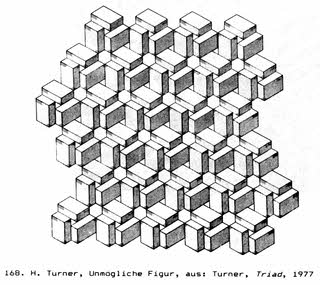 Impossible Object design included in the doctoral thesis on M.C. Escher of Sabine Lepsky (geb. Weber) |
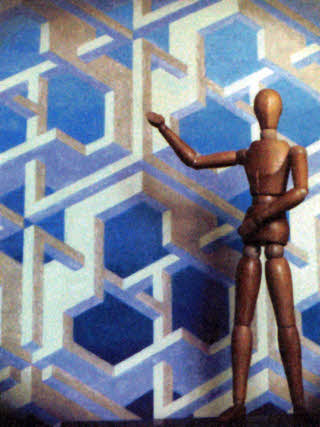 Guided Tour, "Constructivist Baroque" with lay figure |
 Impossible artwork, 1991 | |||||||||
 "Came across some mislaid pics taken in '79, and was amused at the apparent 3D quality of drawings being examined. Fairly leap up from the paper..." H.T. |
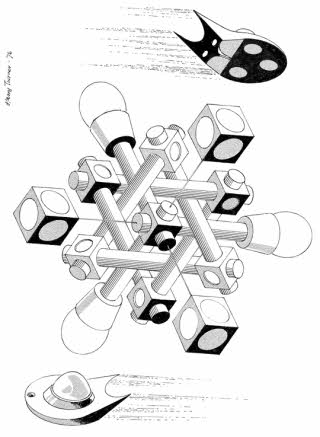 "Interdimensional Traffic Control" (1976) pen & ink on paper, used in Banana Wings #10 (C. Brialey, M. Plummer) & Krax #41 (Andy Robson) |
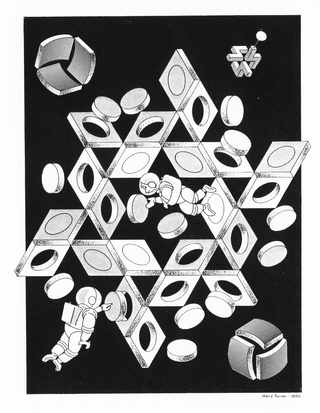 "Game For Two Consenting Astronauts" (1990) pen & ink on paper |
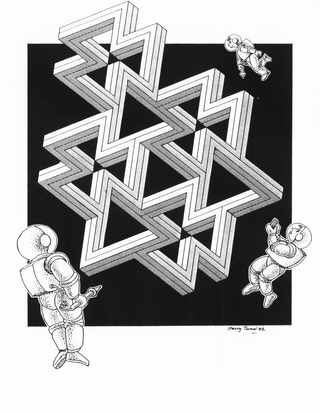 1992 Impossible object design with space theme, pen & ink on paper, back cover illo for STET #9 (David & Leah Smith) |
 The artist at work on a piece of impossible sculpture, 1990, pen & ink on paper, used in Krax #41 (Andy Robson) | 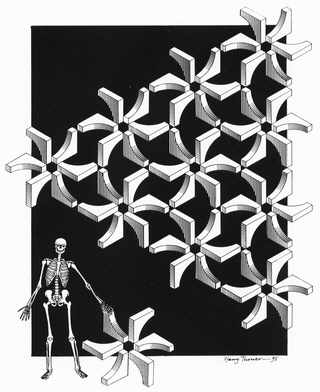 1995 Impossible object design featuring Skel (or Eton), pen & ink on paper, used as back cover of Terrible Work #6 (1996), front cover of Krax #37 (2000) |  1995 Impossible object design featuring Skel, Eton and a friend, pen & ink on paper, used as interior illo for Terrible Work #6 (1996) |
| Further impossible object design from the 1990s, pen & ink on paper centre column: Monkey Puzzle
| 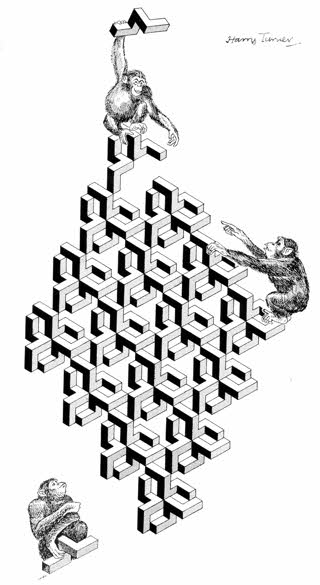 |
 The Proceedings of the The Leonardo Fan Foundation (1993) |
| 3D Triad designs inspired by Harry Turner's correspondence with fellow impossible object creator Diego Uribe of Buenos Aires, Argentina. The designs work with both red/blue and red/green 3D glasses. With the red filter over the left eye, the designs appear to rise out of the plane of the screen and they appear to dive into the plane of the screen with the red filter over the right eye.
Triad designs by H. Turner, 3D effects added by P. Turner |
 |

